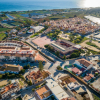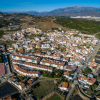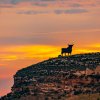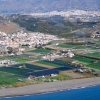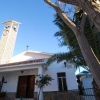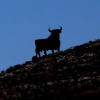Almayate
Almayate is located between Torre del Mar and Benajarafe just a few metres from the coast and the N-340 National Road.
Almayate (waters), was the most important Vélez Málaga farmstead in the Nazar period, especially linked to irrigation farming. It was the only populated area after the Catholic Monarchs’ conquest that had the privilege of staying very close to the coast, hence its name “Almayate insurance”.
As most coastal towns, it consists of two clearly different areas: Inland or Almayate Alto which has not many people and Coastal or Almayate Bajo which is lot more populated.
Almayate has great views of the river Velez estuary through the mountains Peñón and Alarcón which makes it a strategic point to all the different civilizations that settled along this coast. The archaeological sites are abundant with mostly Phoenician remains located in el Cortijo de los Toscanos (The Tuscans’ farmstead) and the Necrópolis de Jardín (Garden cemetery).
In the horizon of Almayate, the “Peñon del Toro” (the bull’s crag) is found with one of the few Osborne bulls that still remain in some parts of Spain.
It should be mentioned that in Almayate there is a live Nativity performance which has been given the distinction of unique tourist festivity in the province of Malaga.
Valle Niza which is next to Almayate, bordering the Mediterranean Sea, has great historical importance with its rock Church which was used by the Mozarab hermits between the VIII and X centuries.
Its origins date back to the Arab period as shown by the Torre Jaral (Jaral tower), a pyramidal building where the artillery used to be kept. The Marquis’ Fortress house is next to it, a clear example of XVIII century Military architecture which is now a Hotel teaching School.
C.P. 29700 Vélez-Málaga Tlf: 952559100
